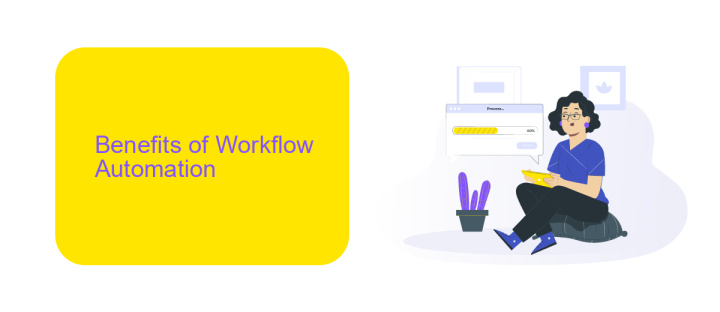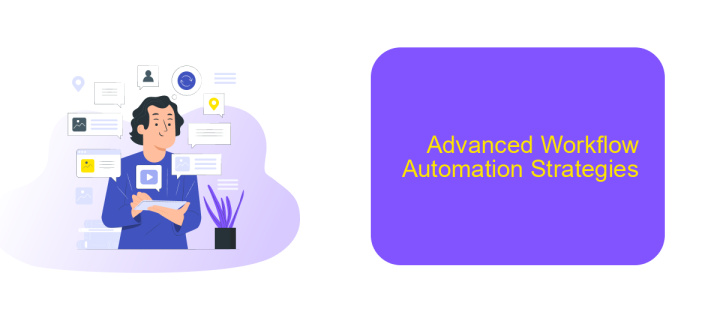McKinsey Workflow Automation
In today's rapidly evolving business landscape, efficiency and productivity are paramount. McKinsey Workflow Automation offers cutting-edge solutions to streamline operations, reduce manual tasks, and enhance overall performance. By leveraging advanced technologies, McKinsey helps organizations optimize their workflows, enabling them to stay competitive and agile in an increasingly digital world. Discover how McKinsey's innovative approach can transform your business processes.
Introduction
McKinsey Workflow Automation represents a significant advancement in the way businesses streamline their operations. By leveraging cutting-edge technology, companies can enhance efficiency, reduce errors, and allocate resources more effectively. This transformation is crucial for maintaining a competitive edge in today's fast-paced market.
- Increased operational efficiency
- Reduced manual errors
- Effective resource allocation
- Enhanced data management
One of the key aspects of successful workflow automation is seamless integration with various tools and services. Platforms like ApiX-Drive play a pivotal role in this process by enabling businesses to connect different applications effortlessly. By automating data transfer and synchronization, ApiX-Drive helps organizations maintain a cohesive and efficient workflow, further amplifying the benefits of McKinsey Workflow Automation.
Benefits of Workflow Automation

Workflow automation offers numerous benefits that significantly enhance business efficiency and productivity. By automating repetitive tasks, companies can reduce human error, streamline processes, and save valuable time. This allows employees to focus on more strategic activities, fostering innovation and driving growth. Additionally, automation provides real-time data and analytics, enabling better decision-making and improved performance tracking.
Another key advantage of workflow automation is the seamless integration of various systems and applications. Tools like ApiX-Drive facilitate this by connecting different software solutions, ensuring smooth data flow and communication between platforms. This not only simplifies complex workflows but also enhances collaboration across departments. Ultimately, workflow automation leads to cost savings, improved accuracy, and higher employee satisfaction, making it an indispensable asset for modern enterprises.
Key Considerations for Workflow Automation

When implementing workflow automation, it's crucial to consider several key factors to ensure success and efficiency. Proper planning and understanding of your organization's specific needs are essential to streamline operations effectively.
- Identify Key Processes: Determine which workflows will benefit most from automation and prioritize them.
- Integration Capabilities: Evaluate the integration capabilities of your automation tools. Services like ApiX-Drive can facilitate seamless integration between various platforms, enhancing overall efficiency.
- Scalability: Ensure that the automation solution can scale with your business growth and adapt to changing needs.
- User Training: Invest in training for your team to effectively use and manage the new automated workflows.
- Monitoring and Maintenance: Establish a system for ongoing monitoring and maintenance to promptly address any issues that arise.
By carefully considering these factors, organizations can successfully implement workflow automation that not only improves efficiency but also supports long-term business goals. Proper integration, such as through ApiX-Drive, can significantly enhance the effectiveness of automated processes.
Advanced Workflow Automation Strategies

Advanced workflow automation strategies involve leveraging cutting-edge technologies and methodologies to optimize business processes. By implementing these strategies, organizations can significantly enhance efficiency, reduce errors, and improve overall productivity.
One key aspect of advanced workflow automation is the integration of various systems and applications. Tools like ApiX-Drive facilitate seamless integration, allowing businesses to automate data transfers and synchronize information across multiple platforms effortlessly.
- Utilize AI and machine learning to predict workflow bottlenecks and optimize task allocation.
- Implement robotic process automation (RPA) for repetitive tasks to free up human resources for more complex activities.
- Leverage cloud-based solutions for real-time collaboration and data access.
- Use advanced analytics to monitor workflow performance and make data-driven decisions.
By adopting these advanced strategies, businesses can stay competitive in a rapidly evolving market. Continuous improvement and innovation in workflow automation not only streamline operations but also pave the way for sustainable growth and success.
Case Studies and Best Practices
One notable case study involves a major retail company that partnered with McKinsey to automate its workflow processes. By leveraging McKinsey's expertise, the company was able to streamline its supply chain management, resulting in a 20% reduction in operational costs. The automation included real-time data analytics, predictive maintenance, and automated inventory management, which collectively enhanced efficiency and reduced downtime.
Another best practice example is a financial services firm that utilized McKinsey's workflow automation to improve its customer service operations. The integration of ApiX-Drive enabled seamless connectivity between various CRM systems and customer support platforms. This led to faster response times and a 30% increase in customer satisfaction. By automating repetitive tasks and optimizing data flow, the firm achieved significant improvements in both service quality and operational efficiency.


FAQ
What is McKinsey Workflow Automation?
How can McKinsey Workflow Automation benefit my organization?
What types of processes can be automated with McKinsey Workflow Automation?
How do I get started with implementing workflow automation in my business?
Is it necessary to have technical expertise to implement McKinsey Workflow Automation?
Apix-Drive is a universal tool that will quickly streamline any workflow, freeing you from routine and possible financial losses. Try ApiX-Drive in action and see how useful it is for you personally. In the meantime, when you are setting up connections between systems, think about where you are investing your free time, because now you will have much more of it.

